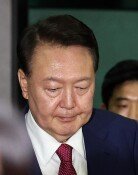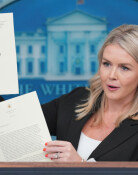[Reporter`s View] Problem of Korean-made goods
[Reporter`s View] Problem of Korean-made goods
Posted February. 13, 2001 19:33,
![[Reporter`s View] Problem of Korean-made goods](https://dimg.donga.com/egc/CDB/ENGLISH/Article/20/01/02/13/2001021335858.jpg)
It was the very moment when Hyundai Motor`s world sports car HDC6 was displayed for the first time at a convention center in Chicago, where a world automobile exhibition was underway.
At that time, the eyes and ears of some 300 reporters from around the world were turned to the show. A promising debut was in the offing. A top Hyundai executive who was watching the show quipped that though the new car looked splendid, some 20 percent of its actual value would disappear into space the moment it was unveiled.
This reporter was quite embarrassed by his remarks. The car should have attracted keen attention from the reporters from the moment it was seen, but in actuality, the situation was quite the opposite.
The executive went on to say that before their manufacturer was known, Korean cars tended to receive more credit for their quality than those of U.S. and European automakers. The tragedy was that once the Hyundai brand on its automobile came into view, its price tended to plunge by about 20 percent.
An official of the Hyundai California Research Institute said Americans no longer regard Toyota-brand cars, which are now firmly rooted in the U.S. market, as Japanese cars.
In speaking with this reporter, employees of the Korean automaker`s plant in Chicago stressed that this was the sad plight of "Korean-made" products. There is a 20 percent vs 80 percent rule in the global car market. That is to say that cars produced by the automakers that do not belong to the advanced 20-percent group are destined to drop sharply. And in order to sell these highly depreciated cars, the carmakers belonging to the 80-percent group have to kowtow to their clients.
When he received an international citation for his contribution to the global car industry, Hyundai Motor chairman Chung Mong-Koo voiced hopes that the honor would help give Korean cars a better reputation.
Though his statement could have been just the kind of remarks one makes at such a ceremony, there was lurking pathos contained within it that requires our contemplation.
Kim Dong-Won daviskim@donga.com





![[속보]트럼프 “한국, 자국 방위비 부담해야”](https://dimg.donga.com/c/138/175/90/1/wps/NEWS/IMAGE/2025/07/09/131965217.1.jpg)

